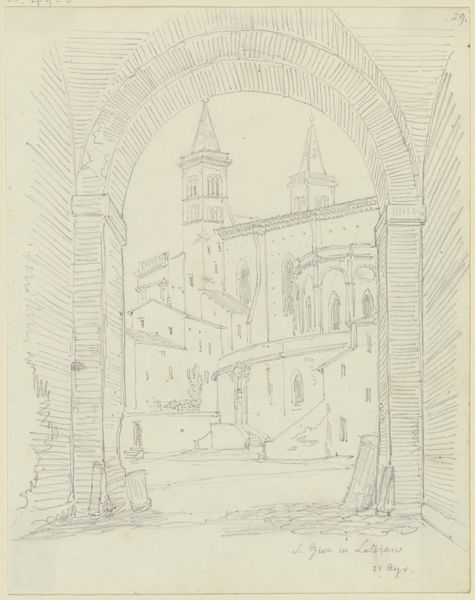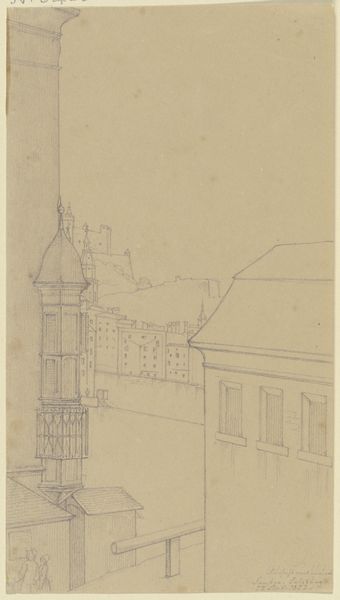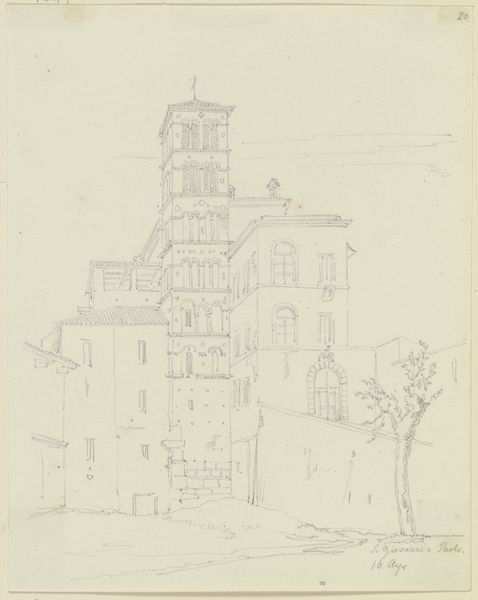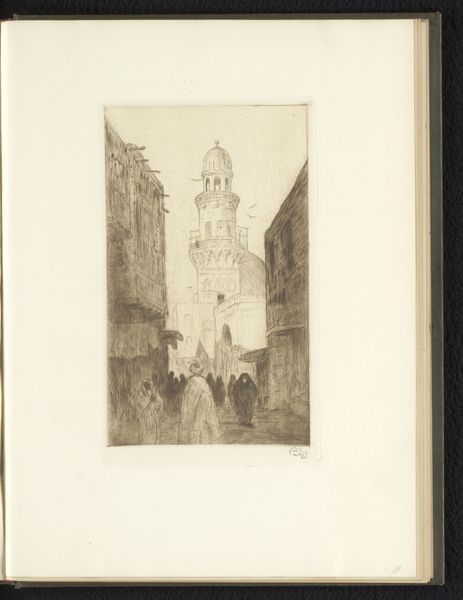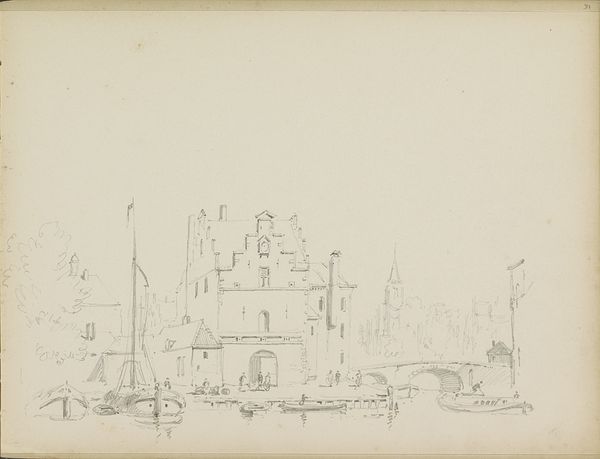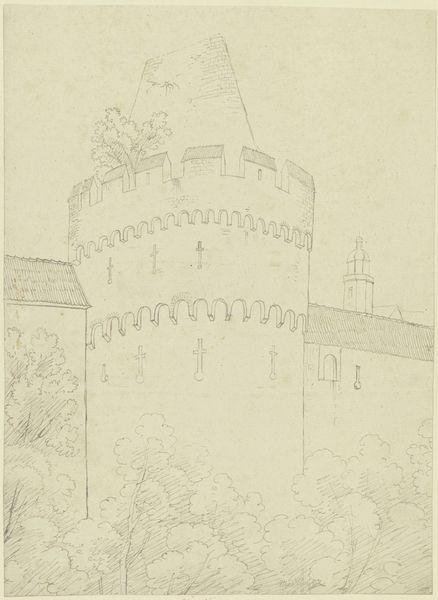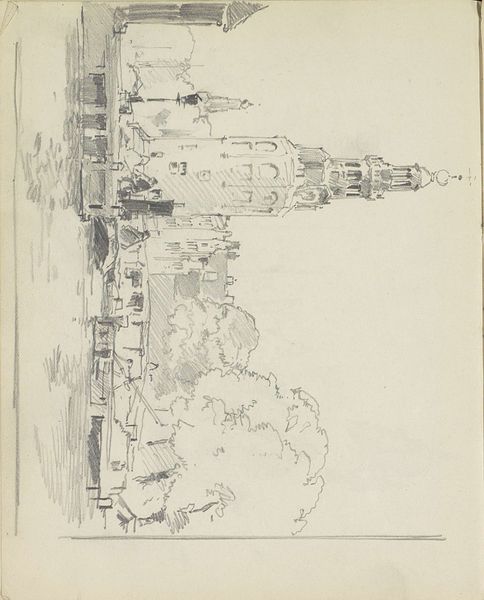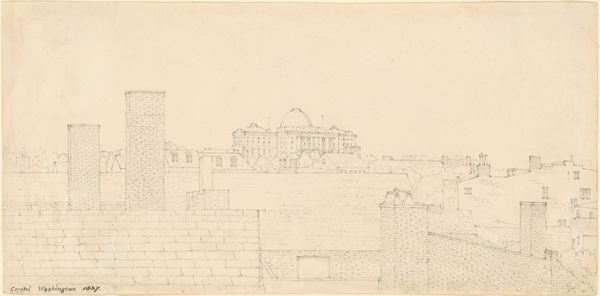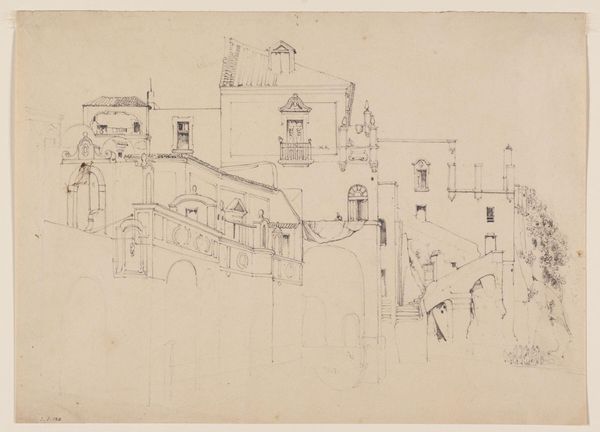
Straßenpartie mit Moschee in Medinet Bebers il Ghaijat 26 - 1830
0:00
0:00
drawing, paper, pencil, graphite, architecture
#
drawing
#
16_19th-century
#
landscape
#
paper
#
egypt
#
pencil
#
graphite
#
cityscape
#
islamic-art
#
architecture
Copyright: Public Domain
Editor: Here we have Friedrich Maximilian Hessemer's "Straßenpartie mit Moschee in Medinet Bebers il Ghaijat," created around 1830, rendered in pencil and graphite on paper. What strikes me immediately is the intricacy of the mosque’s minaret juxtaposed with the stark geometry of the surrounding buildings. How do you interpret this work through a formalist lens? Curator: I appreciate your observation about the geometric forms. A formal analysis highlights the use of line and texture to create spatial depth and architectural detail. Note the precision of the pencil work; Hessemer meticulously captures the surface textures of the buildings. Observe also the structural contrast between the cylindrical minaret and the rectangular buildings. How does this opposition guide the viewer's eye and contribute to the overall composition? Editor: It’s like a deliberate interplay of soft curves versus sharp angles. The composition does emphasize the contrast and seems to celebrate architectural features rather than the emotional impact. It's almost like he is focusing on a descriptive presentation. Do you agree? Curator: Indeed, the focus is undeniably on the intrinsic elements—shape, line, form. He uses a consistent graphite tone which creates balance and cohesion in a complex architectural composition. We see line as a tool, describing edges of shapes within the whole form. Editor: That's fascinating. So, looking at it this way shifts my attention away from the cultural background to a careful appreciation of the artist's technical skill and compositional decisions. Curator: Precisely. By analyzing the formal components of this drawing, we gain a profound insight into the artist’s structural thought process. Editor: I hadn’t considered such a direct, almost mathematical way of reading a drawing. Curator: Well, exploring these formal relationships deepens our engagement with the piece. Editor: Definitely! I will use the formal qualities as a point of reference from now on!
Comments
No comments
Be the first to comment and join the conversation on the ultimate creative platform.
